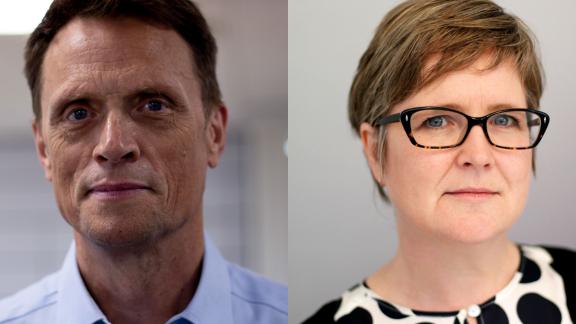A huge task ahead for the NHS

While new funding for the NHS is welcome, the health service isn’t out of the woods yet. In this piece, NHS Providers’ deputy chief executive Saffron Cordery and NHS Confederation’s chief executive Matthew Taylor, discuss what recent funding announcements mean for the NHS and why expectations need to be managed.
There comes a time when government needs to acknowledge the challenges the NHS is facing and take the steps needed to deal with them.
That was the case in the early 2000s – a time when patients often waited 18 months or longer for treatment; when many were left in pain and distress on trolleys in hospital corridors, and when a lack of staff and resources resulted in cancelled procedures, while referral rates continued to rise.
A time when finally, after years of under-investment, the government of the day had to make a choice: either recognise and address the harsh reality of life in the NHS by pledging extra funding and resources, or to look away while millions suffered.
As a result, the late 2000s was a time when patients were no longer waiting long and painful months for procedures. When a four hour wait in A&E was a rarity. When people with cancer, heart failure or stroke had much improved chances of survival.
Resulting factors from underinvestment coupled with COVID-19
Two decades on, hit by the double whammy of years of underinvestment and the impact of COVID-19, the NHS has again reached a point where a significant cash injection is not just desirable, but an imperative to tackle a huge backlog of care. The numbers of people on those waiting lists are daunting.
There are still thousands of patients in hospital with COVID-19 needing care
For planned surgery alone, the numbers waiting for procedures have more than doubled, from 2.5 million in the late 2000s to 5.6 million today. And the Secretary of State for Health and Social Care believes this figure could soar to a staggering 13 million unless urgent action is taken. There are still thousands of patients in hospital with COVID-19 needing care, and 1.6 million people waiting for mental health treatment. Add to that around 1.5 million vulnerable people who are still not receiving the social care they so desperately need.
The government’s response has been to boost financial support for health and social care.
Cash injection
Recent financial commitments by the government involve investing an extra £5.4bn in the NHS for the second half of this financial year, including £500m of additional capital, to support elective care this winter. This is ahead of a further £15.8bn over the next three years via the new health and care levy to support running costs and get waiting lists down.
Of course, this cash injection is very welcome, particularly given the perilous state of public finances. And it is vital, if we are going to deal with the ongoing threat of COVID-19, address the huge care backlog, and deliver a much needed, long overdue boost to social care services.
Our hope is that this extra funding will help the NHS in its efforts to gradually return to the performance levels that were regularly accomplished back in the late 2000s. A time before the impact of austerity measures of the 2010s, reversing many of the health service’s hard-earned achievements.
Continuing pressures
But there is a huge task ahead for the NHS to reach anywhere near the performance levels of a decade ago. And unfortunately, the government’s settlement is just not enough.
This September, analysis published by NHS Providers and NHS Confederation, based on responses from over 200 health leaders, showed that the frontline NHS needs around £10bn of extra funding in 2022 to deal with the direct impact of COVID-19 and the ongoing care backlog.
There is also risk the government’s extra funding will not deliver the necessary improvements without a critical longer-term capital settlement for the service, which would provide vital investment in areas such as ambulances digital technology, and the NHS estate.
While the government has previously allocated £5.4bn funding for hospital building and upgrades, the NHS needs wide-ranging investment across its estates and facilities to address the worrying maintenance backlog.
Looking ahead
The good news is that we can make more progress on backlogs, and we now have a clearer idea about some aspects of social care funding.
But taken as a whole, the government’s funding package falls short. Come the next election, waiting lists could still be at record levels. Added to these concerns, the settlement appears to presume that by 2023, the direct costs of COVID-19 will have disappeared. Of course, everyone wants this to be the case - but it’s not a safe planning assumption. If COVID-19 persists, then this issue will need revisiting.
Those running these services need support from the government so that they can best manage what patients want and expect
This settlement leaves those managing health and care services facing some very difficult decisions about where and how to prioritise care for patients.
Those running these services need support from the government so that they can best manage what patients want and expect regarding the backlog of care. And they will require the continued support from the public in following COVID-19 guidance around social distancing, wearing masks, and any other infection prevention measures.
In this way we hope the NHS will have the best chance to manage challenges on a scale that back in the early 2000s we couldn’t possibly have envisaged.
Matthew Taylor is chief executive of the NHS Confederation, and Saffron Cordery is deputy chief executive of NHS Providers. You can follow them on Twitter @FRSAMatthew @Saffron_Policy
This article was first published by Public Sector Focus



